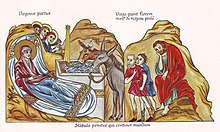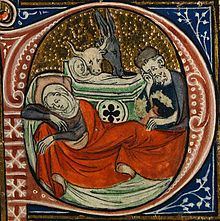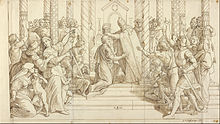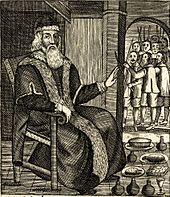Aqua Teen Hunger Force theme by Chief-Kittens
Download: ATHFbyKittens.p3t

(1 background)
| Aqua Teen Hunger Force | |
|---|---|
 | |
| Also known as | Alternative titles:
|
| Genre | |
| Created by | |
| Written by |
|
| Directed by |
|
| Voices of |
|
| Narrated by | Schoolly D |
| Theme music composer |
|
| Opening theme |
|
| Composer | Bill Fulton |
| Country of origin | United States |
| Original language | English |
| No. of seasons | 12 |
| No. of episodes | 144 (1 unaired)[1] (list of episodes) |
| Production | |
| Executive producers |
|
| Producers |
|
| Running time |
|
| Production companies |
|
| Original release | |
| Network |
|
| Release | December 30, 2000 – August 30, 2015 |
| Release | November 26, 2023 – present |
| Related | |
| |
Aqua Teen Hunger Force (also known as Aqua, with various alternative titles), sometimes abbreviated as ATHF or Aqua Teen, is an American adult animated television series created by Dave Willis and Matt Maiellaro for Cartoon Network's late night programming block Adult Swim. It is about the surreal adventures and antics of three anthropomorphic fast food items: Master Shake, Frylock, and Meatwad, who live together as roommates and frequently interact with their human next-door neighbor, Carl Brutananadilewski.
The pilot episode aired as a preview on December 30, 2000. On September 9, 2001, it debuted as an official Adult Swim series. Every episode was directed and written by Willis and Maiellaro, who also provided several voices. Seasons 8–11 were each given a different title, accompanied by different theme music, as a running joke. The series initially concluded on August 30, 2015, after 139 episodes throughout 11 seasons.
Aqua Teen Hunger Force Colon Movie Film for Theaters, a film adaptation of the series, was released in theaters on April 13, 2007, the first adaptation of an Adult Swim series into a feature-length film. A direct-to-video stand-alone sequel, Aqua Teen Forever: Plantasm, was released on November 8, 2022. A spin-off series of shorts, Aquadonk Side Pieces, was announced the same week, and ran on the network's official YouTube channel from April 18 to April 28, 2022. The series airs in broadcast syndication outside the United States and has been released on various DVD sets and other forms of home media, including video on demand streaming. It was the longest-running Adult Swim series until it was surpassed by Robot Chicken in 2020; a twelfth season consisting of five episodes was announced in January 2023 and premiered on November 26, 2023, making it the longest-running Adult Swim series yet again.[2][3][4]
Premise[edit]
The series centers on the surreal adventures and antics of three anthropomorphic fast food items: Master Shake, a selfish, self-contradictory, pathologically lying milkshake; Frylock, an intelligent, usually logical, well-meaning box of French fries; and Meatwad, a shapeshifting, childlike, somewhat simple-minded ball of ground meat. They live together like relatives and rarely get along with their human neighbor Carl Brutananadilewski, a middle-aged, balding, boorish, sex-crazed sports fanatic. The protagonists also interact with various villains or other individuals in each episode; these interactions are often restricted to one episode with minor characters rarely reappearing in the following episodes. Some episodes feature the protagonists interacting with celebrities, historical figures, or professional athletes.
The Mooninites are two aliens from the Moon who frequently appear, serving as primary antagonists and wreaking havoc through a series of illegal or destructive actions. The Mooninites appear more than most characters outside the main cast. Other recurring characters have made several appearances, including Oglethorpe and Emory, MC Pee Pants, Cybernetic Ghost of Christmas Past from the Future, and Dr. Wongburger. Episodes often end with the non-canonical deaths or injuries of major characters, or destruction to their property, only to be restored without explanation in the following episode.
In the show's first seven seasons, the protagonists live in a suburban neighborhood in South New Jersey. During the eighth season, the location was changed to Seattle, Washington.[5] The Seattle neighborhood appears identical to the protagonists' neighborhood from the first seven seasons, but each episode begins with the caption "Seattle" on the bottom of the screen. As of the ninth season, the same neighborhood is in the fictional location of Seattle, New Jersey.[6]
Production[edit]
Development[edit]

The three main characters—Master Shake, Frylock, and Meatwad—were originally created for an episode of Space Ghost Coast to Coast called "Baffler Meal", where they were the corporate mascots for the fictional fast-food chain "Burger Trench". The original versions of the trio were prototypes that resembled the future characters, but both Master Shake and Frylock differed in appearance, personality, and voice from their ultimate design.[7] The original name "Teen Hunger Force" refers to the squad's mission to conquer hunger in teens.[8]
"Baffler Meal" went through a number of drafts[9] but was not animated or produced until after the series became popular. Instead, the Space Ghost episode was initially rewritten as "Kentucky Nightmare", while the trio, along with Carl Brutananadilewski, debuted in "Rabbot", the pilot episode of Aqua Teen Hunger Force. A full season consisting of 16 episodes, including "Rabbot", was put into production shortly thereafter. The series was one of Adult Swim's most popular shows.[10]
In early episodes, the trio was identified by Master Shake as the Aqua Teen Hunger Force, which solved crimes for money. After a few episodes, this premise and the characters' use of the name were dropped. The premise was a trick that had been added to appease Cartoon Network executives, who "didn't want to air a show about food just going around and doing random things".[10] In the show, Frylock says they stopped fighting crime because "that wasn't making us a whole lot of money".[11]
Writing and direction[edit]
Every episode of Aqua Teen Hunger Force was written and directed by series creators Dave Willis and Matt Maiellaro and produced by Williams Street. Much of the dialogue was supplemented with ad-libs and improvisation by the voice talent.[12] The show was fully scripted but ad-libs are included in the final recordings and the shows are animated to include this improvisation. Many of the crew and cast members formerly worked on Space Ghost Coast to Coast.[13]
Alternate titles[edit]
| Alternative title | Season | Original season run |
|---|---|---|
| Aqua Unit Patrol Squad 1 | 8 | May 8, 2011 – July 24, 2011 |
| Aqua Something You Know Whatever | 9 | June 24, 2012 – August 26, 2012 |
| Aqua TV Show Show | 10 | August 11, 2013 – October 20, 2013 |
| Aqua Teen Hunger Force Forever | 11 | June 21, 2015 – August 30, 2015 |
In 2011, for the eighth season, the series' title was changed to Aqua Unit Patrol Squad 1;[5] Maiellaro later explained that he and Willis were getting bored with the former title and wanted to "come up with a new fresh open and a whole new show, just to try it out".[14] Despite the title change there were virtually no changes to the show's characters or tone. In 2012 Maiellaro announced that each subsequent season would have a different series title, making it a running gag.[15] Willis later said the alternate titles were just an unsuccessful stunt to generate buzz.[16]
Each season that is branded under an alternate title features a different opening sequence and theme music written by different artists. On most television listings and digital download sites, the alternatively titled episodes are formally listed under their alternative titles, not as episodes of Aqua Teen Hunger Force. On most legal digital downloading sites that feature the series, the first 7 seasons are presented as Aqua Teen Hunger Force while the alternatively titled seasons are listed separately and treated as if they were each a completely different, one-season series.[citation needed]
Voice actors[edit]
The main cast of the series consists of Dana Snyder as Master Shake,[17] Carey Means as Frylock,[18] and series co-creator Dave Willis as both Meatwad and Carl, as well as Ignignokt.[19][20][21] In addition to the main cast series co-creator Matt Maiellaro voices Err, Cybernetic Ghost of Christmas Past from the Future and Markula.[22][23] Members of the main cast and Maiellaro also voice several minor and one-time characters in addition to their primary roles. All three main characters appear in almost every episode. They are all absent from the season five episode "Sirens" and the season ten episode "Spacecadeuce". In the season five episode "Robots Everywhere", Frylock and Master Shake only make brief unseen speaking cameos, while Meatwad is completely absent.[24][25][26]
Voiceover artist George Lowe has made several appearances throughout the series. Lowe previously starred as Space Ghost in Space Ghost Coast to Coast and the original incarnation of Cartoon Planet, from which several cast and crew members moved on to work for Aqua Teen Hunger Force. Lowe made his first appearance in Aqua Teen Hunger Force in the season one episode "Mail Order Bride" and went on to make several other cameos. He had a prominent appearance as himself in the season four episode "Antenna", and reprised his role as Space Ghost for a quick appearance in Aqua Teen Hunger Force Colon Movie Film for Theaters. Lowe was later considered a member of the main cast in 2011 during Aqua Unit Patrol Squad 1; he announced the title of each episode and continued to make cameos. Lowe later made another prominent appearance in the Aqua Something You Know Whatever episode "Rocket Horse and Jet Chicken".
Series animator C. Martin Croker, known for his interpretation of Zorak in various shows and specials, provided the voices of both Dr. Weird and Steve during the cold openings for the first two seasons and "Allen Part One". Croker also voiced several birds in the season seven episode "Eggball". Andy Merrill has portrayed Oglethorpe alongside Mike Schatz as Emory in several episodes. Merrill is also well known for his interpretation of Brak in several shows and specials and provided the voice of Merle in "Escape from Leprechaupolis" and "The Last One". MC Chris, who has a history of voicing characters on Adult Swim programs, has provided the voice of MC Pee Pants in several episodes. Chris also provided the voice of eight-year-old Carl in "Cybernetic Ghost of Christmas Past from the Future" and returned for a musical role in the season seven episode "One Hundred" after a long absence. Tommy Blacha joined the recurring cast with the introduction of his character Wongburger in the season four episode "Dickesode". With the exception of Tommy Blacha, the entire recurring cast reprised their roles in Aqua Teen Hunger Force Colon Movie Film for Theaters.
Various comedians, athletes, and other celebrities have made guest appearances, usually credited under pseudonyms due to the series originally using non-union voice talent.
The twelfth season featured Eric Bauza, Brian Cox, Maurice LaMarche, Dan Fogler and Gary Anthony Williams. Unlike the first eleven seasons, the twelfth season is unionized under SAG-AFTRA.
| Main Cast members | |||||
|---|---|---|---|---|---|

|

|

|

|

|

|
| Dana Snyder | Carey Means | Dave Willis | Matt Maiellaro | George Lowe | C. Martin Croker |
| Master Shake | Frylock | Meatwad, Carl, Ignignokt, Boxy Brown, Various | Err, Cybernetic Ghost of Christmas Past from the Future, Markula, Various | Himself, Police Officer, Season eight episode announcer, Jet Chicken, Various | Dr. Weird, Steve, Various |
Theme music[edit]
Rapper Schoolly D performed the Aqua Teen Hunger Force theme song used in the first seven seasons. An extended remix version of the theme was used in the 2007 film adaptation and in the soundtrack for the 2011 video game Saints Row: The Third. After a multi-year absence, Schoolly D returned for the season seven episode "Rabbot Redux", performing a different theme song used exclusively in that episode. The special intro to "Rabbot Redux" featured the exact animation used in the regular intro.[27] Each subsequent season featured a different theme song by a different artist with a different animated intro. The eighth season was written and performed by Josh Homme and Alain Johannes.[5] Schoolly D returned for the season nine intro for Aqua Something You Know Whatever, writing and performing it with Mariachi El Bronx. The season 10 theme song was composed by Flying Lotus, an artist with a long history of being featured in Adult Swim's bumps.[28] Every episode features an opening sequence, with the rare exceptions of the season two episode "The Last One", the season nine episode "The Granite Family", and the season ten episode "Spacecadeuce".[29][30]
Cold openings[edit]
During the first two seasons, episodes cold-opened with a glimpse into the laboratory of Dr. Weird. He and his assistant Steve use the first several seconds of the show to create monsters, disasters, and various things. In earlier episodes of the first season, the monsters or creations usually form the basis of the plot, but as the crime-fighting element of the program disappeared, the Dr. Weird segment became a non sequitur opening gag.
In the third season, the Dr. Weird openings were replaced with segments from the pilot episode of Spacecataz, an unaired spin-off created by Willis and Maiellaro. Six episodes were planned for production, but Adult Swim felt there was little that could be made into five more episodes since all the characters were destroyed at the end of the pilot, despite the parent series being predominantly not canonical.[31] These segments featured the Mooninites and Plutonians trading insults, gestures, and practical jokes. The full Spacecataz pilot is available as a special feature on the Volume Four DVD box set.[32] The Mooninites appear to outsmart the Plutonians for much of the series including tagging the Plutonians' ship and reversing a prank that involved 50 million large pizzas.
Cold openings were eliminated starting with the fourth-season premiere, "Dirtfoot". A one-off cold opening featuring Dr. Weird and Steve was used once again in the season eight premiere "Allen Part One".
Cancellation[edit]
In 2015, it was announced that Adult Swim had cancelled Aqua Teen Hunger Force.[33] The cancellation went against the wishes of Willis and Maiellaro, who first learned about it from the animation studio, Awesome Inc., halfway through the production of the 11th season.[34][35] Willis said that Adult Swim president Mike Lazzo made the decision to end the series because "he was ready to move on from it".[36] The double-length episode "The Last One Forever and Ever (For Real This Time) (We Fucking Mean It)" was falsely promoted as the series finale and aired on August 23, 2015. The actual series finale, "The Greatest Story Ever Told", was quietly released early online on August 26 before airing four days later, with virtually no advertisement. At the time of its conclusion, Aqua Teen Hunger Force was Adult Swim's longest-running original series.
Animation[edit]
The first 11 seasons were created using Adobe Photoshop images, animated using Adobe After Effects, and edited using Apple's Final Cut Pro. Beginning with season 12, the series is animated by Floyd County Productions.
Revival[edit]
During an interview about the series' cancellation, Maiellaro said there are no plans to revive Aqua Teen Hunger Force, but that it could return someday.[37] In 2017, Adult Swim was asked why they don't make more episodes, to which they responded "we might" via a bump.
In April 2022, Adult Swim began uploading Aqua Teen Hunger Force shorts under the name Aquadonk Side Pieces to their YouTube channel.[38] These shorts are often less than four minutes and center around the villains in the show, with all original voice actors reprising their roles. In December 2022, Maiellaro announced in an interview that he and Dave Willis were working on five new Aqua Teen scripts.[39] A month later, Adult Swim officially announced the five episodes as the show's twelfth season.[40]
Episodes[edit]
| Season | Episodes | Originally aired | Alternate title | ||||||||||||||||||||||||||||||||||||||||||||||||||||
|---|---|---|---|---|---|---|---|---|---|---|---|---|---|---|---|---|---|---|---|---|---|---|---|---|---|---|---|---|---|---|---|---|---|---|---|---|---|---|---|---|---|---|---|---|---|---|---|---|---|---|---|---|---|---|---|
| First aired | Last aired | Network | |||||||||||||||||||||||||||||||||||||||||||||||||||||
| 1 | 18 | 1 | December 30, 2000 | Cartoon Network | |||||||||||||||||||||||||||||||||||||||||||||||||||
| 17 | September 9, 2001 | December 29, 2002 | Adult Swim | N/A | |||||||||||||||||||||||||||||||||||||||||||||||||||
| 2 | 24 | May 25, 2003 | December 31, 2003 | N/A | |||||||||||||||||||||||||||||||||||||||||||||||||||
| 3 | 13 | April 25, 2004 | October 24, 2004 | N/A
ApophysisApophysis theme by yasicht Download: Apophysis.p3t
Look up apophysis in Wiktionary, the free dictionary. Apophysis may refer to:
See also[edit]Agent FoxAgent Fox theme by PenguinRage Download: AgentFox.p3t
P3T Unpacker v0.12 This program unpacks Playstation 3 Theme files (.p3t) so that you can touch-up an existing theme to your likings or use a certain wallpaper from it (as many themes have multiple). But remember, if you use content from another theme and release it, be sure to give credit! Download for Windows: p3textractor.zip Instructions: Download p3textractor.zip from above. Extract the files to a folder with a program such as WinZip or WinRAR. Now there are multiple ways to extract the theme. The first way is to simply open the p3t file with p3textractor.exe. If you don’t know how to do this, right click the p3t file and select Open With. Alternatively, open the p3t file and it will ask you to select a program to open with. Click Browse and find p3textractor.exe from where you previously extracted it to. It will open CMD and extract the theme to extracted.[filename]. After that, all you need to do for any future p3t files is open them and it will extract. The second way is very simple. Just drag the p3t file to p3textractor.exe. It will open CMD and extract the theme to extracted.[filename]. For the third way, first put the p3t file you want to extract into the same folder as p3textractor.exe. Open CMD and browse to the folder with p3extractor.exe. Enter the following: PenguinPenguin theme by xomaniac Download: Penguin.p3t
Penguins are a group of aquatic flightless birds from the family Spheniscidae (/sfɪˈnɪsɪdiː, -daɪ/) of the order Sphenisciformes (/sfɪˈnɪsəfɔːrmiːz/).[4] They live almost exclusively in the Southern Hemisphere: only one species, the Galápagos penguin, is found north of the Equator. Highly adapted for life in the ocean water, penguins have countershaded dark and white plumage and flippers for swimming. Most penguins feed on krill, fish, squid and other forms of sea life which they catch with their bills and swallow whole while swimming. A penguin has a spiny tongue and powerful jaws to grip slippery prey.[5] They spend about half of their lives on land and the other half in the sea. The largest living species is the emperor penguin (Aptenodytes forsteri):[6] on average, adults are about 1.1 m (3 ft 7 in) tall and weigh 35 kg (77 lb). The smallest penguin species is the little blue penguin (Eudyptula minor), also known as the fairy penguin, which stands around 30–33 cm (12–13 in) tall and weighs 1.2–1.3 kg (2.6–2.9 lb).[7] Today, larger penguins generally inhabit colder regions, and smaller penguins inhabit regions with temperate or tropical climates. Some prehistoric penguin species were enormous: as tall or heavy as an adult human. There was a great diversity of species in subantarctic regions, and at least one giant species in a region around 2,000 km south of the equator 35 mya, during the Late Eocene, a climate decidedly warmer than today.[8] Etymology[edit] The word penguin first appears in literature at the end of the 16th century as a synonym for the great auk.[9] When European explorers discovered what are today known as penguins in the Southern Hemisphere, they noticed their similar appearance to the great auk of the Northern Hemisphere and named them after this bird, although they are not closely related.[10] The etymology of the word penguin is still debated. The English word is not apparently of French,[11] Breton[12] or Spanish[13] origin (the latter two are attributed to the French word pingouin), but first appears in English or Dutch.[14] Some dictionaries suggest a derivation from Welsh pen, 'head' and gwyn, 'white',[15] including the Oxford English Dictionary, the American Heritage Dictionary,[16] the Century Dictionary[16] and Merriam-Webster,[17] on the basis that the name was originally applied to the great auk, either because it was found on White Head Island (Welsh: Pen Gwyn) in Newfoundland, or because it had white circles around its eyes (though the head was black). An alternative etymology links the word to Latin pinguis, which means 'fat' or 'oil'.[18] Support for this etymology can be found in the alternative Germanic word for penguin, fettgans or 'fat-goose', and the related Dutch word vetgans. Adult male penguins are sometimes called cocks, females sometimes called hens; a group of penguins on land is a waddle, and a group of penguins in the water is a raft. Pinguinus[edit]Since 1871, the Latin word Pinguinus has been used in scientific classification to name the genus of the great auk (Pinguinus impennis, meaning "plump or fat without flight feathers"),[19] which became extinct in the mid-19th century.[9] As confirmed by a 2004 genetic study, the genus Pinguinus belongs in the family of the auks (Alcidae), within the order of the Charadriiformes.[20][21] The birds currently known as penguins were discovered later and were so named by sailors because of their physical resemblance to the great auk. Despite this resemblance, however, they are not auks, and are not closely related to the great auk.[10][19] They do not belong in the genus Pinguinus, and are not classified in the same family and order as the great auk. They were classified in 1831 by Charles Lucien Bonaparte in several distinct genera within the family Spheniscidae and order Sphenisciformes. Systematics and evolution[edit]Taxonomy[edit]The family name of Spheniscidae was given by Charles Lucien Bonaparte from the genus Spheniscus,[22] the name of that genus comes from the Greek word σφήν sphēn "wedge" used for the shape of an African penguin's swimming flippers.[23] Some recent sources[3][24] apply the phylogenetic taxon Spheniscidae to what here is referred to as Spheniscinae. Furthermore, they restrict the phylogenetic taxon Sphenisciformes to flightless taxa, and establish the phylogenetic taxon Pansphenisciformes as equivalent to the Linnean taxon Sphenisciformes,[24] i.e., including any flying basal "proto-penguins" to be discovered eventually. Given that neither the relationships of the penguin subfamilies to each other nor the placement of the penguins in the avian phylogeny is presently resolved, this is confusing, so the established Linnean system is followed here. Evolution[edit] Although the evolutionary and biogeographic history of Sphenisciformes is well-researched, many prehistoric forms are not fully described. Some seminal articles about the evolutionary history of penguins have been published since 2005.[3][25][26][27] The basal penguins lived around the time of the Cretaceous–Paleogene extinction event in the general area of southern New Zealand and Byrd Land, Antarctica.[3] Due to plate tectonics, these areas were at that time less than 1,500 kilometres (930 mi) apart rather than 4,000 kilometres (2,500 mi). The most recent common ancestor of penguins and Procellariiformes can be roughly dated to the Campanian–Maastrichtian boundary, around 70–68 mya.[25][27][28] Basal fossils[edit]The oldest known fossil penguin species is Waimanu manneringi, which lived 62 mya in New Zealand.[27] While they were not as well-adapted to aquatic life as modern penguins, Waimanu were flightless, with short wings adapted for deep diving.[27] They swam on the surface using mainly their feet, but the wings were – as opposed to most other diving birds (both living and extinct) – already adapting to underwater locomotion.[29] Perudyptes from northern Peru was dated to 42 mya. An unnamed fossil from Argentina proves that, by the Bartonian (Middle Eocene), some 39–38 mya,[30] primitive penguins had spread to South America and were in the process of expanding into Atlantic waters.[24] Palaeeudyptines[edit]During the Late Eocene and the Early Oligocene (40–30 mya), some lineages of gigantic penguins existed. Nordenskjoeld's giant penguin was the tallest, growing nearly 1.80 meters (5.9 feet) tall. The New Zealand giant penguin was probably the heaviest, weighing 80 kilograms (180 lb) or more. Both were found on New Zealand, the former also in the Antarctic farther eastwards. Traditionally, most extinct species of penguins, giant or small, had been placed in the paraphyletic subfamily called Palaeeudyptinae. More recently, with new taxa being discovered and placed in the phylogeny if possible, it is becoming accepted that there were at least two major extinct lineages. One or two closely related ones occurred in Patagonia, and at least one other—which is or includes the paleeudyptines as recognized today – occurred on most Antarctic and Subantarctic coasts. Size plasticity was significant at this initial stage of radiation: on Seymour Island, Antarctica, for example, around 10 known species of penguins ranging in size from medium to large apparently coexisted some 35 mya during the Priabonian (Late Eocene).[31] It is not known whether the palaeeudyptines constitute a monophyletic lineage, or whether gigantism was evolved independently in a restricted Palaeeudyptinae and the Anthropornithinae – whether they were considered valid, or whether there was a wide size range present in the Palaeeudyptinae as delimited (i.e., including Anthropornis nordenskjoeldi).[3] The oldest well-described giant penguin, the 5-foot (1.5 m)-tall Icadyptes salasi, existed as far north as northern Peru about 36 mya. Gigantic penguins had disappeared by the end of the Paleogene, around 25 mya. Their decline and disappearance coincided with the spread of the Squalodontidae and other primitive, fish-eating toothed whales, which competed with them for food and were ultimately more successful.[25] A new lineage, the Paraptenodytes, which includes smaller and stout-legged forms, had already arisen in southernmost South America by that time. The early Neogene saw the emergence of another morphotype in the same area, the similarly sized but more gracile Palaeospheniscinae, as well as the radiation that gave rise to the current biodiversity of penguins. Origin and systematics of modern penguins[edit]Modern penguins constitute two undisputed clades and another two more basal genera with more ambiguous relationships.[26] To help resolve the evolution of this order, 19 high-coverage genomes that, together with two previously published genomes, encompass all extant penguin species have been sequenced.[32] The origin of the Spheniscinae lies probably in the latest Paleogene and, geographically, it must have been much the same as the general area in which the order evolved: the oceans between the Australia-New Zealand region and the Antarctic.[25] Presumably diverging from other penguins around 40 mya,[25] it seems that the Spheniscinae were for quite some time limited to their ancestral area, as the well-researched deposits of the Antarctic Peninsula and Patagonia have not yielded Paleogene fossils of the subfamily. Also, the earliest spheniscine lineages are those with the most southern distribution. The genus Aptenodytes appears to be the basalmost divergence among living penguins.[3][33] They have bright yellow-orange neck, breast, and bill patches; incubate by placing their eggs on their feet, and when they hatch the chicks are almost naked. This genus has a distribution centred on the Antarctic coasts and barely extends to some Subantarctic islands today. Pygoscelis contains species with a fairly simple black-and-white head pattern; their distribution is intermediate, centred on Antarctic coasts but extending somewhat northwards from there. In external morphology, these apparently still resemble the common ancestor of the Spheniscinae, as Aptenodytes' autapomorphies are, in most cases, fairly pronounced adaptations related to that genus' extreme habitat conditions. As the former genus, Pygoscelis seems to have diverged during the Bartonian,[34] but the range expansion and radiation that led to the present-day diversity probably did not occur until much later; around the Burdigalian stage of the Early Miocene, roughly 20–15 mya.[25] The genera Spheniscus and Eudyptula contain species with a mostly Subantarctic distribution centred on South America; some, however, range quite far northwards. They all lack carotenoid colouration and the former genus has a conspicuous banded head pattern; they are unique among living penguins by nesting in burrows. This group probably radiated eastwards with the Antarctic Circumpolar Current out of the ancestral range of modern penguins throughout the Chattian (Late Oligocene), starting approximately 28 mya.[25] While the two genera separated during this time, the present-day diversity is the result of a Pliocene radiation, taking place some 4–2 mya.[25] The Megadyptes–Eudyptes clade occurs at similar latitudes (though not as far north as the Galápagos penguin), has its highest diversity in the New Zealand region, and represents a westward dispersal. They are characterized by hairy yellow ornamental head feathers; their bills are at least partly red. These two genera diverged apparently in the Middle Miocene (Langhian, roughly 15–14 mya), although the living species of Eudyptes are the product of a later radiation, stretching from about the late Tortonian (Late Miocene, 8 mya) to the end of the Pliocene.[25] Geography[edit]The geographical and temporal pattern of spheniscine evolution corresponds closely to two episodes of global cooling (disambiguation) documented in the paleoclimatic record.[25] The emergence of the Subantarctic lineage at the end of the Bartonian corresponds with the onset of the slow period of cooling that eventually led to the ice ages some 35 million years later. With habitat on the Antarctic coasts declining, by the Priabonian more hospitable conditions for most penguins existed in the Subantarctic regions rather than in Antarctica itself.[35] Notably, the cold Antarctic Circumpolar Current also started as a continuous circumpolar flow only around 30 mya, on the one hand forcing the Antarctic cooling, and on the other facilitating the eastward expansion of Spheniscus to South America and eventually beyond.[25] Despite this, there is no fossil evidence to support the idea of crown radiation from the Antarctic continent in the Paleogene, although DNA study favors such a radiation.[35] Later, an interspersed period of slight warming was ended by the Middle Miocene Climate Transition, a sharp drop in global average temperature from 14 to 12 mya, and similar abrupt cooling events followed at 8 mya and 4 mya; by the end of the Tortonian, the Antarctic ice sheet was already much like today in volume and extent. The emergence of most of today's Subantarctic penguin species almost certainly was caused by this sequence of Neogene climate shifts. Relationship to other bird orders[edit]Penguin ancestry beyond Waimanu remains unknown and not well-resolved by molecular or morphological analyses. The latter tend to be confounded by the strong adaptive autapomorphies of the Sphenisciformes; a sometimes perceived fairly close relationship between penguins and grebes is almost certainly an error based on both groups' strong diving adaptations, which are homoplasies. On the other hand, different DNA sequence datasets do not agree in detail with each other either.  What seems clear is that penguins belong to a clade of Neoaves (living birds except for paleognaths and fowl) that comprises what is sometimes called "higher waterbirds" to distinguish them from the more ancient waterfowl. This group contains such birds as storks, rails, and the seabirds, with the possible exception of the Charadriiformes.[36] Inside this group, penguin relationships are far less clear. Depending on the analysis and dataset, a close relationship to Ciconiiformes[27] or to Procellariiformes[25] has been suggested. Some think the penguin-like plotopterids (usually considered relatives of cormorants and anhingas) may actually be a sister group of the penguins and those penguins may have ultimately shared a common ancestor with the Pelecaniformes and consequently would have to be included in that order, or that the plotopterids were not as close to other pelecaniforms as generally assumed, which would necessitate splitting the traditional Pelecaniformes into three.[37] A 2014 analysis of whole genomes of 48 representative bird species has concluded that penguins are the sister group of Procellariiformes,[38] from which they diverged about 60 million years ago (95% CI, 56.8-62.7).[39] The distantly related Puffins, which live in the North Pacific and North Atlantic, developed similar characteristics to survive in the Arctic and sub-Arctic environments. Like the penguins, puffins have a white chest, black back and short stubby wings providing excellent swimming ability in icy water. But, unlike penguins, puffins can fly, as flightless birds would not survive alongside land-based predators such as polar bears and foxes; there are no such predators in the Antarctic. Their similarities indicate that similar environments, although at great distances, can result in similar evolutionary developments, i.e. convergent evolution.[40] Anatomy and physiology[edit] Golden GlitterOrange 0.1Orange 0.1 theme by Gackt Download: Orange0.1.p3t
P3T Unpacker v0.12 This program unpacks Playstation 3 Theme files (.p3t) so that you can touch-up an existing theme to your likings or use a certain wallpaper from it (as many themes have multiple). But remember, if you use content from another theme and release it, be sure to give credit! Download for Windows: p3textractor.zip Instructions: Download p3textractor.zip from above. Extract the files to a folder with a program such as WinZip or WinRAR. Now there are multiple ways to extract the theme. The first way is to simply open the p3t file with p3textractor.exe. If you don’t know how to do this, right click the p3t file and select Open With. Alternatively, open the p3t file and it will ask you to select a program to open with. Click Browse and find p3textractor.exe from where you previously extracted it to. It will open CMD and extract the theme to extracted.[filename]. After that, all you need to do for any future p3t files is open them and it will extract. The second way is very simple. Just drag the p3t file to p3textractor.exe. It will open CMD and extract the theme to extracted.[filename]. For the third way, first put the p3t file you want to extract into the same folder as p3textractor.exe. Open CMD and browse to the folder with p3extractor.exe. Enter the following: ChristmasChristmas theme by ChainClutch Download: Christmas.p3t
Christmas is an annual festival commemorating the birth of Jesus Christ, observed primarily on December 25[a] as a religious and cultural celebration among billions of people around the world.[2][3][4] A feast central to the liturgical year in Christianity, it follows the season of Advent (which begins four Sundays before) or the Nativity Fast, and initiates the season of Christmastide, which historically in the West lasts twelve days and culminates on Twelfth Night.[5] Christmas Day is a public holiday in many countries,[6][7][8] is celebrated religiously by a majority of Christians,[9] as well as culturally by many non-Christians,[1][10] and forms an integral part of the holiday season surrounding it. The traditional Christmas narrative recounted in the New Testament, known as the Nativity of Jesus, says that Jesus was born in Bethlehem, in accordance with messianic prophecies.[11] When Joseph and Mary arrived in the city, the inn had no room, and so they were offered a stable where the Christ Child was soon born, with angels proclaiming this news to shepherds, who then spread the word.[12] There are different hypotheses regarding the date of Jesus's birth, and in the early fourth century, the church fixed the date as December 25.[b][13][14][15] This corresponds to the traditional date of the winter solstice on the Roman calendar.[16] It is exactly nine months after Annunciation on March 25, also the date of the spring equinox.[17] Most Christians celebrate on December 25 in the Gregorian calendar, which has been adopted almost universally in the civil calendars used in countries throughout the world. However, part of the Eastern Christian Churches celebrate Christmas on December 25 of the older Julian calendar, which currently corresponds to January 7 in the Gregorian calendar. For Christians, believing that God came into the world in the form of man to atone for the sins of humanity rather than knowing Jesus's exact birth date is considered to be the primary purpose of celebrating Christmas.[18][19][20] The customs associated with Christmas in various countries have a mix of pre-Christian, Christian, and secular themes and origins.[21][22] Popular holiday traditions include gift giving; completing an Advent calendar or Advent wreath; Christmas music and caroling; watching Christmas movies; viewing a Nativity play; an exchange of Christmas cards; attending church services; a special meal; and displaying various Christmas decorations, including Christmas trees, Christmas lights, nativity scenes, garlands, wreaths, mistletoe, and holly. Additionally, several related and often interchangeable figures, known as Santa Claus, Father Christmas, Saint Nicholas, and Christkind, are associated with bringing gifts to children during the Christmas season and have their own body of traditions and lore.[23] Because gift-giving and many other aspects of the Christmas festival involve heightened economic activity, the holiday has become a significant event and a key sales period for retailers and businesses. Over the past few centuries, Christmas has had a steadily growing economic effect in many regions of the world. Etymology[edit]The English word Christmas is a shortened form of 'Christ's Mass'.[24] The word is recorded as Crīstesmæsse in 1038 and Cristes-messe in 1131.[25] Crīst (genitive Crīstes) is from the Greek Χριστός (Khrīstos, 'Christ'), a translation of the Hebrew מָשִׁיחַ (Māšîaḥ, 'Messiah'), meaning 'anointed';[26][27] and mæsse is from the Latin missa, the celebration of the Eucharist.[28] The form Christenmas was also used during some periods, but is now considered archaic and dialectal.[29] The term derives from Middle English Cristenmasse, meaning 'Christian mass'.[30] Xmas is an abbreviation of Christmas found particularly in print, based on the initial letter chi (Χ) in the Greek Χριστός, although some style guides discourage its use.[31] This abbreviation has precedent in Middle English Χρ̄es masse (where Χρ̄ is another abbreviation of the Greek word).[30] Other names[edit]The holiday has had various other English names throughout its history. The Anglo-Saxons referred to the feast as "midwinter",[32][33] or, more rarely, as Nātiuiteð (from the Latin nātīvitās below).[32][34] Nativity, meaning 'birth', is from the Latin nātīvitās.[35] In Old English, Gēola ('Yule') referred to the period corresponding to December and January, which was eventually equated with Christian Christmas.[36] 'Noel' (also 'Nowel' or 'Nowell', as in "The First Nowell") entered English in the late 14th century and is from the Old French noël or naël, itself ultimately from the Latin nātālis (diēs) meaning 'birth (day)'.[37] Koleda is the traditional Slavic name for Christmas and the period from Christmas to Epiphany or, more generally, to Slavic Christmas-related rituals, some dating to pre-Christian times.[38] Nativity[edit] The gospels of Luke and Matthew describe Jesus as being born in Bethlehem to the Virgin Mary. In the Gospel of Luke, Joseph and Mary travel from Nazareth to Bethlehem in order to be counted for a census, and Jesus is born there and placed in a manger.[39] Angels proclaim him a savior for all people, and three shepherds come to adore him. In the Gospel of Matthew, by contrast, three magi follow a star to Bethlehem to bring gifts to Jesus, born the king of the Jews. King Herod orders the massacre of all the boys less than two years old in Bethlehem, but the family flees to Egypt and later returns to Nazareth.[40] History[edit]Early and medieval era[edit] In the 2nd century, the "earliest church records" indicate that "Christians were remembering and celebrating the birth of the Lord", an "observance [that] sprang up organically from the authentic devotion of ordinary believers"; although "they did not agree upon a set date".[41] The earliest evidence of Christ's birth being marked on December 25 is a sentence in the Chronograph of 354.[42][43][44][45] Liturgical historians generally agree that this part of the text was written in Rome in AD 336.[43] Though Christmas did not appear on the lists of festivals given by the early Christian writers Irenaeus and Tertullian,[25] the early Church Fathers John Chrysostom, Augustine of Hippo, and Jerome attested to December 25 as the date of Christmas toward the end of the fourth century.[41] December 25 was the traditional date of the winter solstice in the Roman Empire,[46] where most Christians lived, and the Roman festival Dies Natalis Solis Invicti (birthday of Sol Invictus, the 'Invincible Sun') had been held on this date since 274 AD.[47] In the East, the birth of Jesus was celebrated in connection with the Epiphany on January 6.[48][49] This holiday was not primarily about Christ's birth, but rather his baptism.[50] Christmas was promoted in the East as part of the revival of Orthodox Christianity that followed the death of the pro-Arian Emperor Valens at the Battle of Adrianople in 378. The feast was introduced in Constantinople in 379, in Antioch by John Chrysostom towards the end of the fourth century,[49] probably in 388, and in Alexandria in the following century.[51] The Georgian Iadgari demonstrates that Christmas was celebrated in Jerusalem by the sixth century.[52]  In the Early Middle Ages, Christmas Day was overshadowed by Epiphany, which in western Christianity focused on the visit of the magi. However, the medieval calendar was dominated by Christmas-related holidays. The forty days before Christmas became the "forty days of St. Martin" (which began on November 11, the feast of St. Martin of Tours), now known as Advent.[53] In Italy, former Saturnalian traditions were attached to Advent.[53] Around the 12th century, these traditions transferred again to the Twelve Days of Christmas (December 25 – January 5); a time that appears in the liturgical calendars as Christmastide or Twelve Holy Days.[53] In 567, the Council of Tours put in place the season of Christmastide, proclaiming "the twelve days from Christmas to Epiphany as a sacred and festive season, and established the duty of Advent fasting in preparation for the feast."[5][54] This was done in order to solve the "administrative problem for the Roman Empire as it tried to coordinate the solar Julian calendar with the lunar calendars of its provinces in the east."[55][56][57] The prominence of Christmas Day increased gradually after Charlemagne was crowned Emperor on Christmas Day in 800.[58] King Edmund the Martyr was anointed on Christmas in 855 and King William I of England was crowned on Christmas Day 1066.[59]  By the High Middle Ages, the holiday had become so prominent that chroniclers routinely noted where various magnates celebrated Christmas. King Richard II of England hosted a Christmas feast in 1377 at which 28 oxen and 300 sheep were eaten.[53] The Yule boar was a common feature of medieval Christmas feasts. Caroling also became popular, and was originally performed by a group of dancers who sang. The group was composed of a lead singer and a ring of dancers that provided the chorus. Various writers of the time condemned caroling as lewd, indicating that the unruly traditions of Saturnalia and Yule may have continued in this form.[53] "Misrule"—drunkenness, promiscuity, gambling—was also an important aspect of the festival. In England, gifts were exchanged on New Year's Day, and there was special Christmas ale.[53] Christmas during the Middle Ages was a public festival that incorporated ivy, holly, and other evergreens.[60] Christmas gift-giving during the Middle Ages was usually between people with legal relationships, such as tenant and landlord.[60] The annual indulgence in eating, dancing, singing, sporting, and card playing escalated in England, and by the 17th century the Christmas season featured lavish dinners, elaborate masques, and pageants. In 1607, King James I insisted that a play be acted on Christmas night and that the court indulge in games.[61] It was during the Reformation in 16th–17th-century Europe that many Protestants changed the gift bringer to the Christ Child or Christkindl, and the date of giving gifts changed from December 6 to Christmas Eve.[62] 17th and 18th centuries[edit]Following the Protestant Reformation, many of the new denominations, including the Anglican Church and Lutheran Church, continued to celebrate Christmas.[63] In 1629, the Anglican poet John Milton penned On the Morning of Christ's Nativity, a poem that has since been read by many during Christmastide.[64][65] Donald Heinz, a professor at California State University, states that Martin Luther "inaugurated a period in which Germany would produce a unique culture of Christmas, much copied in North America."[66] Among the congregations of the Dutch Reformed Church, Christmas was celebrated as one of the principal evangelical feasts.[67] However, in 17th century England, some groups such as the Puritans strongly condemned the celebration of Christmas, considering it a Catholic invention and the "trappings of popery" or the "rags of the Beast".[68] In contrast, the established Anglican Church "pressed for a more elaborate observance of feasts, penitential seasons, and saints' days. The calendar reform became a major point of tension between the Anglican party and the Puritan party."[69] The Catholic Church also responded, promoting the festival in a more religiously oriented form. King Charles I of England directed his noblemen and gentry to return to their landed estates in midwinter to keep up their old-style Christmas generosity.[61] Following the Parliamentarian victory over Charles I during the English Civil War, England's Puritan rulers banned Christmas in 1647.[68][70] Protests followed as pro-Christmas rioting broke out in several cities and for weeks Canterbury was controlled by the rioters, who decorated doorways with holly and shouted royalist slogans.[68] Football, among the sports the Puritans banned on a Sunday, was also used as a rebellious force: when Puritans outlawed Christmas in England in December 1647 the crowd brought out footballs as a symbol of festive misrule.[71] The book, The Vindication of Christmas (London, 1652), argued against the Puritans, and makes note of Old English Christmas traditions, dinner, roast apples on the fire, card playing, dances with "plow-boys" and "maidservants", old Father Christmas and carol singing.[72] During the ban, semi-clandestine religious services marking Christ's birth continued to be held, and people sang carols in secret.[73]  It was restored as a legal holiday in England with the Restoration of King Charles II in 1660 when Puritan legislation was declared null and void, with Christmas again freely celebrated in England.[73] Many Calvinist clergymen disapproved of Christmas celebration. As such, in Scotland, the Presbyterian Church of Scotland discouraged the observance of Christmas, and though James VI commanded its celebration in 1618, attendance at church was scant.[74] The Parliament of Scotland officially abolished the observance of Christmas in 1640, claiming that the church had been "purged of all superstitious observation of days".[75] Whereas in England, Wales and Ireland Christmas Day is a common law holiday, having been a customary holiday since time immemorial, it was not until 1871 that it was designated a bank holiday in Scotland.[76] Following the Restoration of Charles II, Poor Robin's Almanack contained the lines: "Now thanks to God for Charles return, / Whose absence made old Christmas mourn. / For then we scarcely did it know, / Whether it Christmas were or no."[77] The diary of James Woodforde, from the latter half of the 18th century, details the observance of Christmas and celebrations associated with the season over a number of years.[78] As in England, Puritans in Colonial America staunchly opposed the observation of Christmas.[79] The Pilgrims of New England pointedly spent their first December 25 in the New World working normally.[79] Puritans such as Cotton Mather condemned Christmas both because scripture did not mention its observance and because Christmas celebrations of the day often involved boisterous behavior.[80][81] Many non-Puritans in New England deplored the loss of the holidays enjoyed by the laboring classes in England.[82] Christmas observance was outlawed in Boston in 1659.[79] The ban on Christmas observance was revoked in 1681 by English governor Edmund Andros, but it was not until the mid-19th century that celebrating Christmas became fashionable in the Boston region.[83] At the same time, Christian residents of Virginia and New York observed the holiday freely. Pennsylvania Dutch settlers, predominantly Moravian settlers of Bethlehem, Nazareth, and Lititz in Pennsylvania and the Wachovia settlements in North Carolina, were enthusiastic celebrators of Christmas. The Moravians in Bethlehem had the first Christmas trees in America as well as the first Nativity Scenes.[84] Christmas fell out of favor in the United States after the American Revolution, when it was considered an English custom.[85] George Washington attacked Hessian (German) mercenaries on the day after Christmas during the Battle of Trenton on December 26, 1776, Christmas being much more popular in Germany than in America at this time. With the atheistic Cult of Reason in power during the era of Revolutionary France, Christian Christmas religious services were banned and the three kings cake was renamed the "equality cake" under anticlerical government policies.[86][87] 19th century[edit]
Wood CarvingWood Carving theme by -snake_eater- Download: woodcarvingtheme.p3t
Redirect to:
Cataclysum (Fixed)Cataclysum theme by Klekamp Download: Cataclysum.p3t
P3T Unpacker v0.12 This program unpacks Playstation 3 Theme files (.p3t) so that you can touch-up an existing theme to your likings or use a certain wallpaper from it (as many themes have multiple). But remember, if you use content from another theme and release it, be sure to give credit! Download for Windows: p3textractor.zip Instructions: Download p3textractor.zip from above. Extract the files to a folder with a program such as WinZip or WinRAR. Now there are multiple ways to extract the theme. The first way is to simply open the p3t file with p3textractor.exe. If you don’t know how to do this, right click the p3t file and select Open With. Alternatively, open the p3t file and it will ask you to select a program to open with. Click Browse and find p3textractor.exe from where you previously extracted it to. It will open CMD and extract the theme to extracted.[filename]. After that, all you need to do for any future p3t files is open them and it will extract. The second way is very simple. Just drag the p3t file to p3textractor.exe. It will open CMD and extract the theme to extracted.[filename]. For the third way, first put the p3t file you want to extract into the same folder as p3textractor.exe. Open CMD and browse to the folder with p3extractor.exe. Enter the following: ViceVice theme by Vice Download: Vice.p3t
 A vice is a practice, behaviour, or habit generally considered morally wrong in the associated society. In more minor usage, vice can refer to a fault, a negative character trait, a defect, an infirmity, or a bad or unhealthy habit.[citation needed] Vices are usually associated with a fault in a person's character or temperament rather than their morality.[1] Synonyms for vice include fault, sin, depravity, iniquity, wickedness, and corruption. The antonym of vice is virtue.[2] Etymology[edit]The modern English term that best captures its original meaning is the word vicious, which means "full of vice". In this sense, the word vice comes from the Latin word vitium, meaning "failing or defect".[3][4] Law enforcement[edit]Depending on the country or jurisdiction, vice crimes may or may not be treated as a separate category in the criminal codes. Even in jurisdictions where vice is not explicitly delineated in the legal code, the term vice is often used in law enforcement and judicial systems as an umbrella term for crimes involving activities that are considered inherently immoral, regardless of the legality or objective harm involved. In the United Kingdom, the term vice is commonly used in law and law enforcement to refer to criminal offences related to prostitution and pornography.[5] In the United States, the term is also used to refer to crimes related to drugs, alcohol, and gambling.[6] Vice squad[edit]  A vice squad, also called a vice unit or a morality squad, is generally, though not always, a police division, whose focus is to restrain or suppress moral crimes. Though what is considered or accepted as a moral crime by society often varies considerably according to local laws or customs between nations, countries, or states, it often includes activities such as gambling, narcotics, pornography, and illegal sales of alcoholic beverages.[7][8] Vice squads do not concentrate on more serious crimes like fraud and murder. Religion[edit]Religious police, for example Islamic religious police units or sharia police in certain Muslim countries, are morality squads that also monitor, for example, dress codes, observance of store-closures during prayer time, consumption of unlawful beverages or foods, unrelated males and females socializing, and homosexual behavior. Buddhism[edit]In the Sarvastivadin tradition of Buddhism, there are 108 defilements, or vices, which are prohibited. These are subdivided into 10 bonds and 98 proclivities.[9] The 10 bonds are the following:[9]
Judaism[edit]Avoiding vice is an important theme in Jewish ethics, especially within musar literature. Christianity[edit]
Christians believe there are two kinds of vice:[citation needed]
The first kind of vice, though sinful, is believed less serious than the second. Vices recognized as spiritual by Christians include blasphemy (holiness betrayed), apostasy (faith betrayed), despair (hope betrayed), hatred (love betrayed), and indifference (scripturally, a "hardened heart"). Christian theologians have reasoned that the most destructive vice equates to a certain type of pride or the complete idolatry of the self. It is argued that through this vice, which is essentially competitive, all the worst evils come into being. In Christian theology, it originally led to the Fall of Man, and, as a purely diabolical spiritual vice, it outweighs anything else often condemned by the Church. Roman Catholicism[edit]The Roman Catholic Church distinguishes between vice, which is a habit of sin, and the sin itself, which is an individual morally wrong act. In Roman Catholicism, the word "sin" also refers to the state that befalls one upon committing a morally wrong act. In this section, the word always means the sinful act. It is the sin, and not the vice, that deprives one of God's sanctifying grace and renders one deserving of God's punishment. Thomas Aquinas taught that "absolutely speaking, the sin surpasses the vice in wickedness".[10] On the other hand, even after a person's sins have been forgiven, the underlying habit (the vice) may remain. Just as vice was created in the first place by repeatedly yielding to the temptation to sin, so vice may be removed only by repeatedly resisting temptation and performing virtuous acts; the more entrenched the vice, the more time and effort needed to remove it. Saint Thomas Aquinas says that following rehabilitation and the acquisition of virtues, the vice does not persist as a habit, but rather as a mere disposition, and one that is in the process of being eliminated. Medieval illuminated manuscripts circulated with colorful schemas for developing proper attitudes, with scriptural allusions modelled on nature: the tree of virtues as blossoming flowers or vices bearing sterile fruit, The Renaissance writer Pietro Bembo is credited with reaffirming and promoting the Christian perfection of classical humanism. Deriving all from love (or the lack thereof) his[11] schemas were added as supplements[12] in the newly invented technology of printing by Aldus Manutius in his editions of Dante's Divine Comedy dating from early in the 16th century. Dante's seven deadly vices[edit]The poet Dante Alighieri listed the following seven deadly vices, associating them structurally[13] as flaws in the soul's inherent capacity for goodness as made in the Divine Image yet perverted by the Fall:
The first three terraces of purgatory expiate the sins which can be considered to arise from love perverted, that is, sins which arise from the heart of the sinner being set upon something which is wrong in the eyes of God. Those being purged here must have their love set upon the right path. The fourth terrace of purgatory expiates the sins which can be considered to arise from love defective, that is, love which, although directed towards the correct subjects is too weak to drive the sinner to act as they should. Those being purged here must have their love strengthened so as to drive them correctly. The fifth, sixth, and seventh terraces of purgatory expiate the sins which can be considered to arise from love excessive, that is, love which although directed towards ends which God considers good is directed towards them too much for the sinner to gain bliss from them, and also so that the sinner is distracted from the love of other things of which God approves. Their love must be cooled to a more sensible level. Islam[edit]The Qur'an and many other Islamic religious writings provide prohibitions against acts that are seen as immoral. Ibn abi Dunya, a 9th-century scholar and tutor to the caliphs, described 6 censures (prohibitions against vices) in his writings:[14]< Epicureanism[edit]Although not strictly a religion but a Hellenistic philosophy, Epicurean ethics prescribes a therapeutic approach to the vices with the goal of attaining a life of pleasure with the aid of the virtues. Most of the techniques used in Epicureanism involve challenging false beliefs and attaining beliefs that are aligned with nature. In this, Epicureanism posits an entirely naturalistic, non-religious theory of virtue and vice based on the rational pursuit of pleasure.[15] See also[edit]
Notes[edit]
References[edit]
External links[edit]Wikimedia Commons has media related to Vices. | |||||||||||||||||||||||||||||||||||||||||||||||||||















